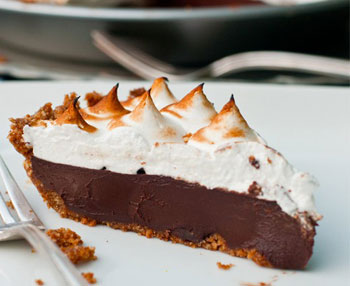 Friday’s I clean out my fridge. I had about two cups of both cream cheese frosting and butter cream frosting left over. Rarely do I throw food away, but there are those times that something just cannot be saved. In the past, I have found myself whipping up a soba salad to avoid getting rid of a few cucumbers, almost yucky tomatoes can be turned into fresh, roasted salsa or bacon hash, and zucchini inevitable becomes a cake. Upon cleaning out the fridge, I did in fact have two zucchini’s that needed some attention. The light bulb went off and a chocolate zucchini loaf with cream cheese frosting was born.
Friday’s I clean out my fridge. I had about two cups of both cream cheese frosting and butter cream frosting left over. Rarely do I throw food away, but there are those times that something just cannot be saved. In the past, I have found myself whipping up a soba salad to avoid getting rid of a few cucumbers, almost yucky tomatoes can be turned into fresh, roasted salsa or bacon hash, and zucchini inevitable becomes a cake. Upon cleaning out the fridge, I did in fact have two zucchini’s that needed some attention. The light bulb went off and a chocolate zucchini loaf with cream cheese frosting was born.
This cake was delicious. It will become my go to cake when I need something in a quick pinch.

 Day 29 of 31 Days Of Pie is Lemon Meringue Pie from Kate McDermott, Art Of The Pie
Day 29 of 31 Days Of Pie is Lemon Meringue Pie from Kate McDermott, Art Of The Pie Every time I step into a meat market, I think of my mom. I can’t count the times I impatiently waited as she stood in front of the clear glass that separated her from rows of raw meat. As the butcher stood on the other side of the meat case waiting for her order, she examined the ground beef and the red, marbled roasts.
Every time I step into a meat market, I think of my mom. I can’t count the times I impatiently waited as she stood in front of the clear glass that separated her from rows of raw meat. As the butcher stood on the other side of the meat case waiting for her order, she examined the ground beef and the red, marbled roasts. Summer has officially arrived in Los Angeles. It’s hot. My oven hasn’t been turned on for days. Dinners are all about the BBQ, my saute pan, and lots and lot of fresh veggies and salads.
Summer has officially arrived in Los Angeles. It’s hot. My oven hasn’t been turned on for days. Dinners are all about the BBQ, my saute pan, and lots and lot of fresh veggies and salads. In Italy's Piedmont region, where polenta may be better loved than
anywhere else on Earth, the cornmeal mush is a food of the fall. When
the air turns crisp with the first frost and people await the arrival
of snow, housewives labor over their cooking pots, stirring, stirring
as coarse meal slurried in water gradually thickens and becomes sticky
and delicious. To serve, it's poured out onto a wooden board in a rich
golden puddle like a harvest moon.
In Italy's Piedmont region, where polenta may be better loved than
anywhere else on Earth, the cornmeal mush is a food of the fall. When
the air turns crisp with the first frost and people await the arrival
of snow, housewives labor over their cooking pots, stirring, stirring
as coarse meal slurried in water gradually thickens and becomes sticky
and delicious. To serve, it's poured out onto a wooden board in a rich
golden puddle like a harvest moon. 